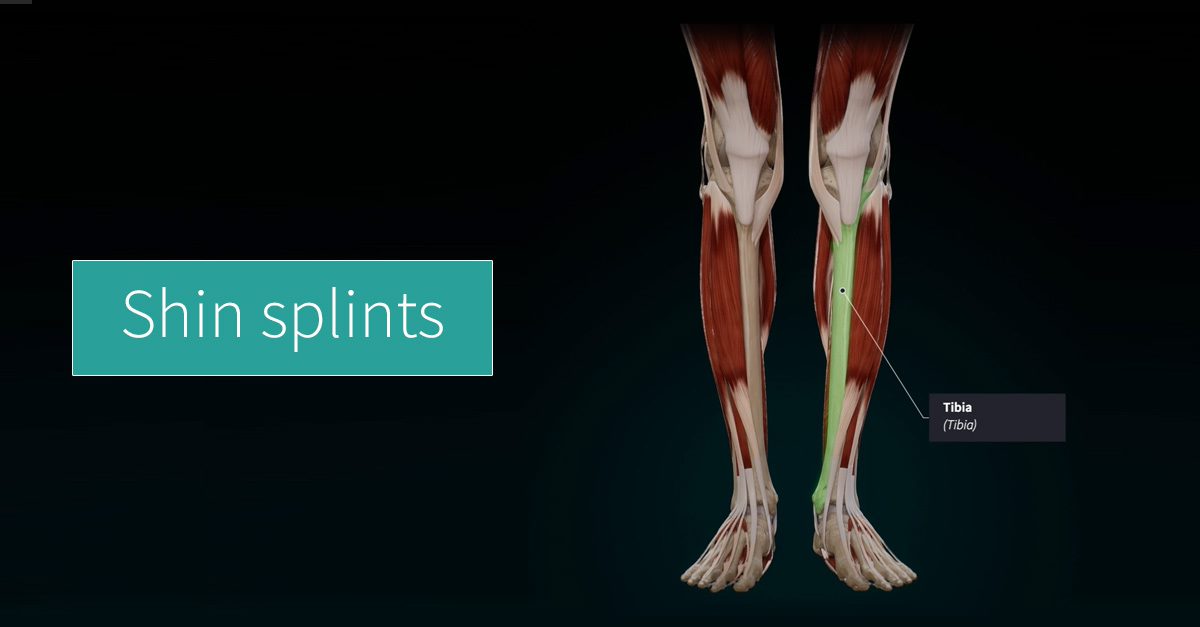
The tibia, also known as the shin bone, is a bone of the lower limb that is located below your knee. The tibia articulates with the femur to form the knee joint, and with the talus to contribute to the ankle joint. The tibia also articulates with the fibula at both its superior and inferior ends. The tibia is the second longest bone in the human body, the femur being the longest.
The tibia can be affected by a condition known as shin splints. Shin splints is a common disorder and refers to pain felt in the tibia bone. It can also be known as medial tibial stress syndrome.
Shin splints are usually caused by exercise, such as running and jumping, especially on hard surfaces with no shock absorption. In addition, having flat feet, shoes that don’t fit well, weak joints, weak muscles and not including a warmup and cooldown as part of your exercise routine can cause shin splints. These can all lead to stress on the tibia and surrounding connective tissues, triggering inflammation and pain. Other symptoms of shin splints include tenderness and swelling.
Anatomically, there are two different types of shin splints: anterior shin splints and posterior shin splints. Anterior shin splints affect the tibialis anterior muscle. This muscle is involved in dorsiflexion and inversion of the foot at the ankle joint. In other words, moving your foot up towards your ankle or rotating your foot outwards. On the other hand, posterior shin splints affect the tibialis posterior muscle. This muscle is involved in plantarflexion and inversion of the foot at the ankle joint. In other words, pointing or outwardly rotating your foot.
Another important to thing to note is that your bones are covered by a specialised connective tissue called the periosteum. Repetitive stress on the tibialis anterior and tibialis posterior muscles can cause pulling and irritation on the periosteum, leading to shin splints. Without rest and treatment, the muscle could detach from the tibia or a tibial stress fracture could occur.
Shin splints are a treatable condition. It is important to rest when you have shin splints to give your body the time to heal. You can ice the shin or take anti-inflammatories to reduce pain and swelling. Most importantly, care should be taken to prevent the exacerbation or recurrence of shin splints. For example, proper fitting footwear, with appropriate arch supports should be worn. Attention should also be made to your exercise routine to ensure you are warming up and cooling down as well as carrying out exercises carefully.
You can use Complete Anatomy to study the anatomy of the bones and muscles of the leg to better understand shin splints.
